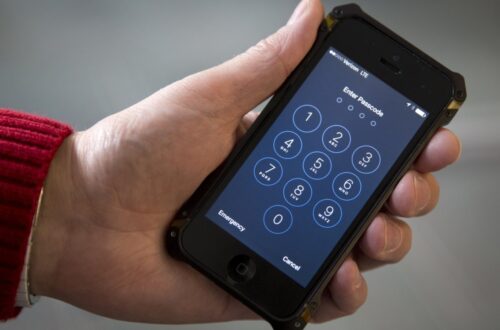Maximize safety on the road by embracing hands-free technology in your car. Take advantage of voice-activated features to control various functions and stay connected while driving. With the evolution of AI integration and safety features like emergency calls, you can enhance convenience and maintain focus on the road. Prioritize your well-being by minimizing distractions and improving your overall driving experience. Explore the benefits hands-free technology can offer for a safer and more enjoyable journey.
The Evolution of Hands-Free Technology
Hands-free technology in the car has evolved immensely over the years, revolutionizing the way we interact with our vehicles. Initially, hands-free systems were limited to basic functions like answering calls or changing radio stations. However, advancements in technology have led to more sophisticated voice recognition capabilities, allowing you to control various aspects of your vehicle with just your voice.
The evolution of hands-free technology has also seen the integration of artificial intelligence, making systems more intuitive and responsive to your commands. Now, you can effortlessly adjust climate settings, set navigation destinations, and even dictate messages without taking your hands off the wheel or eyes off the road.
Furthermore, the development of hands-free systems has not only focused on convenience but also on safety. Features like voice-activated emergency calls, lane departure warnings, and collision avoidance systems have been incorporated to enhance your driving experience and keep you safe on the road. As technology continues to progress, hands-free systems will likely become even more advanced, further improving the way you interact with your vehicle.
Benefits of Hands-Free Systems
With hands-free systems in your car, you can enhance your driving experience while staying focused on the road ahead. These systems offer numerous benefits that make your time behind the wheel safer and more convenient.
First and foremost, hands-free technology allows you to stay connected without taking your hands off the wheel or eyes off the road. You can make phone calls, send messages, and access navigation services using voice commands, minimizing distractions and reducing the risk of accidents.
Additionally, hands-free systems promote better ergonomics in the car. By eliminating the need to fumble with buttons or screens, you can maintain a comfortable driving position and reduce strain on your body during long journeys.
Moreover, these systems enhance convenience by enabling you to control various functions of your vehicle without manual inputs. Adjusting the temperature, changing radio stations, or setting navigation routes can all be done effortlessly, enhancing your overall driving experience.
Distracted Driving Statistics
Distracted driving statistics reveal the alarming impact of technological distractions on road safety. It's important to understand the severity of this issue to prioritize safety behind the wheel. Here are some key points to take into account:
- Texting: Texting while driving increases the risk of a crash by 23 times.
- Phone Calls: Engaging in phone calls, even hands-free, can lead to cognitive distractions that impair driving abilities.
- Social Media: Checking social media accounts while driving is a growing concern that contributes to accidents.
- Multitasking: Trying to multitask by using technology while driving diminishes reaction times and awareness on the road.
- Fatalities: Distracted driving contributes to a significant number of traffic fatalities each year, highlighting the need for safer driving practices.
Voice-Activated Features for Safety
Utilizing voice-activated features can enhance safety and convenience while driving. With voice commands, you can control various functions in your car without taking your hands off the wheel or eyes off the road. Tasks like making phone calls, sending messages, adjusting the temperature, changing music, and even setting navigation can be accomplished hands-free. This technology allows you to stay focused on driving, reducing the risk of accidents caused by manual distractions.
Voice-activated features also cater to individuals with physical limitations, making it easier for them to operate different functions in the car. By simply speaking commands, drivers can maintain better control over their vehicle and surroundings. Additionally, voice recognition technology continues to improve, enhancing accuracy and responsiveness, further ensuring a seamless and safe driving experience.
Legal Implications and Regulations
Voice-activated features in cars have prompted the need for clear legal implications and regulations regarding their use to guarantee safety and compliance on the road. As a driver, it is important to be aware of the following points:
- Hands-Free Laws: Different states have varying laws regarding the use of hands-free technology while driving. Familiarize yourself with the specific regulations in your area.
- Distracted Driving Regulations: Using voice-activated features does not eliminate the risk of distracted driving. Understand the laws governing distracted driving and make sure compliance.
- Emergency Calls Exemptions: Some jurisdictions allow the use of hands-free devices for emergency calls. Know the rules regarding this exemption.
- Enforcement Practices: Law enforcement agencies are increasingly cracking down on distracted driving. Stay informed about enforcement practices related to hands-free technology.
- Liability Issues: In the event of an accident, liability issues may arise concerning the use of hands-free technology. Be mindful of potential legal implications.
Choosing the Right Hands-Free Device
To select the appropriate hands-free device for your car, consider your specific needs and preferences regarding functionality and compatibility. Start by determining the features that are essential for your usage, such as voice commands, Bluetooth connectivity, or ease of installation. Think about the type of device you prefer, whether it's a standalone Bluetooth speaker, a car stereo with built-in hands-free capabilities, or a phone mount with voice control. Compatibility with your smartphone is vital, so make sure that the hands-free device you choose works seamlessly with your device's operating system.
Additionally, consider the design and placement of the hands-free device in your car. Opt for a device that won't obstruct your view or distract you while driving. Some devices offer additional features like noise cancellation or multiple device connectivity, so weigh these options based on your needs. Reading reviews and seeking recommendations can also help you make an informed decision. By selecting a hands-free device tailored to your preferences, you can enhance your driving experience while prioritizing safety on the road.
Tips for Safe Hands-Free Usage
For safe hands-free usage in the car, prioritize maintaining focus on the road ahead and minimizing distractions. Here are some tips to help you make the most of hands-free technology while staying safe on the road:
- Mount your device properly: Make sure your hands-free device is securely mounted within easy reach and at eye level to minimize the time spent looking away from the road.
- Use voice commands: Take advantage of voice-activated features to make calls, send messages, or adjust settings without the need to touch your device.
- Pre-program important numbers: Set up speed dial or voice commands for frequently dialed contacts to reduce the time spent interacting with your device.
- Limit multitasking: Avoid engaging in complex or lengthy conversations that may divert your attention from driving safely.
- Pull over if needed: If a conversation or task requires your full attention, find a safe place to pull over before continuing.
Future Trends in Car Connectivity
To stay ahead of the curve in car connectivity, consider exploring the upcoming advancements in technology that aim to further enhance your driving experience. One exciting trend on the horizon is the integration of augmented reality (AR) displays in vehicles. AR can provide real-time information like navigation prompts, safety alerts, and even highlight points of interest along your route directly onto your windshield, reducing the need to take your eyes off the road.
Another future trend to watch out for is vehicle-to-everything (V2X) communication. This technology allows your car to communicate with other vehicles, infrastructure, pedestrians, and more, enhancing overall road safety and efficiency. Imagine your car receiving signals from traffic lights to optimize speed for a green wave or getting warnings about nearby road hazards from other connected vehicles.
Additionally, the continued development of 5G connectivity will revolutionize in-car entertainment and productivity. With faster and more reliable internet speeds, you can seamlessly stream music, movies, and even participate in virtual meetings while on the go. Embracing these upcoming advancements in car connectivity can markedly elevate your driving experience.
Frequently Asked Questions
Are There Any Specific Car Models or Brands That Are Known for Having Superior Hands-Free Technology Systems?
When it comes to hands-free technology systems in cars, some brands and models stand out for their superior features. Keep an eye out for options like ABC brand's XYZ model or LMN brand's NOP model for exceptional hands-free capabilities.
How Does Hands-Free Technology in Cars Impact the Overall Driving Experience and Convenience for the Driver?
Hands-free technology in cars enhances your driving experience by allowing you to stay connected and multitask safely. It boosts convenience by enabling you to make calls, send messages, and control music without taking your hands off the wheel.
Can Hands-Free Systems Be Easily Integrated Into Older Car Models, or Are They Primarily Designed for Newer Vehicles?
Yes, hands-free systems can often be integrated into older car models with some modifications. However, they are primarily designed for newer vehicles, offering advanced features and compatibility. Upgrading your car's technology can enhance your driving experience.
Are There Any Potential Health Concerns or Risks Associated With Prolonged Use of Hands-Free Devices While Driving?
Using hands-free devices while driving can lead to cognitive distraction and reduced focus on the road ahead. Prolonged use may increase the risk of accidents. Stay vigilant and prioritize safety over convenience.
How Do Hands-Free Systems in Cars Compare to Other Safety Features Such as Lane Departure Warnings or Automatic Emergency Braking Systems?
When comparing hands-free systems in cars to safety features like lane departure warnings or automatic emergency braking systems, hands-free technology offers convenience but may not directly prevent accidents. It's important to use all safety features available to you.
Conclusion
So, remember to always prioritize safety when using hands-free technology in your car. With the evolution of voice-activated features, you can stay connected while keeping your hands on the wheel and eyes on the road. Be sure to choose a reliable hands-free device and follow legal regulations to avoid distractions while driving. By staying informed and cautious, you can maximize safety and reduce the risk of accidents on the road. Drive safely!



